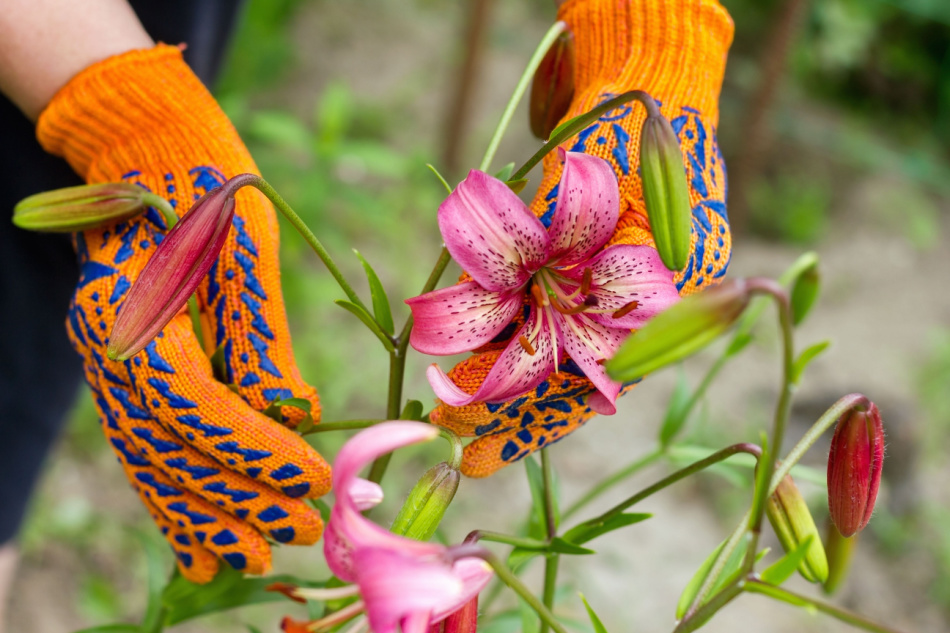“The magic of Samhain is that of endless possibility. Since we return to the beginning, we can begin anew in any way we wish.” ~ Michael Furie
By: MARVIN LANES
A look at today’s date, November 1st, tells us we are collectively entering the darkness. No, this is not an ominous foreshadowing before the upcoming elections. By entering the darkness, I mean this in strict observance of Halloween and its  true origins: the ancient Celtic festival of Samhain, a pagan celebration to mark the beginning of the dark half of the year.
true origins: the ancient Celtic festival of Samhain, a pagan celebration to mark the beginning of the dark half of the year.
There is hardly anything profound or sacred about Halloween in its modern, commodified form. Americans spend some $9 billion on the holiday each year, and we are more likely to gain cavities from Halloween than any societal wisdom. But when we trace the origins of Halloween all the way back to the Celtic festival of Samhain (pronounced SOW-in), what we find is a wellspring of captivating ancient traditions and unique ways of organizing society that stand in profound contrast to the world we find ourselves in today.
What is Samhain?
There is a mistaken belief that Halloween is America’s version of the Día de los Muertos (Day of the Dead) celebrations that commence today in Mexico. Don’t be fooled. Although both touch upon the idea of death, the two festivities are very much different.
Día de los Muertos can be seen as a blend of pre-Hispanic religious rites and the Catholic celebrations that take place elsewhere on November 1st and 2nd: All Saints’ Day and All Souls’ Day. It is a colorful celebration of death spanning three days. A time to embrace the spirits of dead ancestors and relatives as they return Earthside for a visit.
The word Halloween is incontestably Christian, coming from the Middle English word Alholowmesse, meaning “All Saints’ Eve.” But while the name is Christian, its true origins are not. Scholars trace the origins of Halloween back to the pagan Celtic festival of Samhain, which took place in present-day Ireland and was first celebrated over 2,000 years ago. Eventually, like many Pagan traditions, Samhain would be reframed as a Christian holiday, arriving in America with the millions of Irish immigrants escaping the Potato Famine of the 1840s.
From ancient Gaelic texts, we know that the Celtic year—at least in the British Isles—was divided into two equal parts: the dark half (winter), which began on Samhain, November 1st, and the luminous half (summer), which began on Beltane, May 1st. Samhain marked the start of the new year for the Celts and a descent into darker, colder times.
During Samhain, the barrier between life and death was believed to disappear, leaving the ghosts of the dead and spirits from the Otherworld free to roam amongst the living. The Celts also believed in Sidhs (fairies), who would visit during Samhain. To appease these supernatural visitors, as well as the Celtic deities who wanted their “rightful” share of the harvest, the Celts would offer sacrifices, which usually involved burning animals or crops in bonfires.
Ancient Gaelic texts also indicate that the Celts would dress up as animals and monsters during Samhain, with the idea being that these costumes allowed the living to hide from spirits. Visiting spirits were respected by the Celts, but they were also feared. It was believed that some spirits could hide livestock and haunt the living who they believed had done them wrong.
Here we can find a defining difference between Halloween and the Dia de los Muertos traditions of Mexico. Whereas Halloween tends to focus on the fear of death and otherworldly spirits, Dia de los Muertos is about embracing death and celebrating the memories of those who have passed.
 Before we venture further into the traditions of Samhain, it should be noted that the Celts didn’t operate by the so-called “Gregorian” calendar. As philosopher and historian Jean Markale points out in his book, The Pagan Mysteries of Halloween, the Celts used a lunar calendar consisting of twelve months of twenty-eight days, with a thirteenth intercalary month inserted to make the solar and lunar cycles coincide. Samhain, at least in ancient times, took place on the night of the full moon closest to November 1st. Thus, dating Samhain to November 1st or Beltane to May 1st is but a matter of convenience. This month’s full moon falls on Halloween itself, making it a timely moment to discuss the connections between the two!
Before we venture further into the traditions of Samhain, it should be noted that the Celts didn’t operate by the so-called “Gregorian” calendar. As philosopher and historian Jean Markale points out in his book, The Pagan Mysteries of Halloween, the Celts used a lunar calendar consisting of twelve months of twenty-eight days, with a thirteenth intercalary month inserted to make the solar and lunar cycles coincide. Samhain, at least in ancient times, took place on the night of the full moon closest to November 1st. Thus, dating Samhain to November 1st or Beltane to May 1st is but a matter of convenience. This month’s full moon falls on Halloween itself, making it a timely moment to discuss the connections between the two!
For us, the Celts’ use of a lunar calendar is a vital clue as to what kind of people the Celts of modern-day Ireland were.
“The Christian calendar aims at universality and a kind of eternal return, but the Celtic calendar concerns itself more with the interactions between living beings and the cosmos, considered to be an indivisible totality,” writes Markale. “It is this close rapport between the individual and the cosmos that conditions the flow of time throughout the entire year for the Celts.”
Just like their cosmic-orientated timekeeping, many aspects of Celtic life are so fascinating and unique precisely because this ancient society was never integrated with the Roman Empire. This makes the island of Ireland an “authentic conservatory,” as Markale puts it, of archaic customs and traditions. And while some of Samhain’s traditions, such as animal sacrifices, are indeed outdated, there are communal aspects of the festival that have a certain allure today—especially at a time where the US feels, well, a bit divided.
These communal aspects of Samhain include some of the practical traditions built into the festival. For as much as Samhain was focused on the fostering interactions between the living and the dead, it was also a festival to celebrate the harvest that has been, prepare for the harsh winter to come, and to review and improve the rules and laws that governed the Celtic tribes. Let’s dig a little deeper, shall we?
Rituals of Samhain
In America, no one is obliged to participate in Halloween, though you might be “tricked” for failing to give out candy. However, if you were a Celt and decided not to partake in the Samhain festivities, an unfortunate fate would await you: madness, followed by death.
Everyone in Celtic society, no matter their social status, had an obligation to participate in Samhain. This is the first and probably most important rule of Samhain, and failure to do so would result in your death—a punishment not enforced by man, but rather, by a higher, unforgiving power. Sure, this might sound brutal, but participating in Samhain was by no means a boring obligation and there is some charm in the idea that everyone was included in the festivities.
It is generally believed that Samhain took place over the course of three days and three nights. Let’s look at what else, other than costume-wearing and bonfires, happened during the Celts’ descent into darkness.
In his General History of Ireland, the twelfth century historian Keating writes the following: “All the scholars of Ireland met every three years at Tara during the time of Samhain, in order to regulate and renew the rules and laws, and to approve the annals and archives of Ireland.” This shows that, beyond the supernatural, Samhain very much had a practical, judicial aspect to it.
Keating also explains that it “was custom to put to death anyone who committed violence or rape, who assaulted someone, or who made use of their weapons” during Samhain, with “the king alone having the power, and no one else, to pardon such an action.” Again, while this sounds brutal, the idea here was that Samhain was a time of pacifism where all conflict had to be pushed aside or settled. People were also asked to stow away their weapons during Samhain and focus on “communion.”
Speaking of communion, here’s a word we often find in the Christian tradition and one that is typically carried out by the sharing of food and drink. It happens in the Last Supper, and it also at the festival of Samhain, albeit to an extreme degree. The Celts would not just eat and drink—they would indulge excessively on mostly mead, but also beer and wine.
A whole community binging on alcohol over the course of three days probably sounds a bit vulgar and surely the hangover that ensued wasn’t so pretty for most folks. However, we shouldn’t denounce the Celts as drunkards for their communal binges. As Markale writes, these Samhain feasts are “primarily orgies in the exact sense of the word, which is to say the ‘collective exaltation of energy.’”
“The orgy is a sacred ritual whose objective has unfortunately been forgotten: to surpass the human condition by awakening all the resources of the individual in order to reach the supernatural and the divine.”
Markale points out that the root of the word drunkenness in all the Celtic languages is the same as that characterizing the word middle. That is to say that to be in a state of drunkenness is to be “in the middle,” to be on the vague border that separates the real and imaginary worlds, the human and the divine. Through excessive drinking, the Celts were said to be bringing themselves closer to the spirits and pagan gods that visited during Samhain. Hard to think of a better reason to drink than that one.
Of course, it wouldn’t be a festival without any games. One game that has stood the test of time is apple bobbing. In the Celtic tradition, the apple is a sacred fruit. If you cut it crosswise, it will reveal a five-pointed star or pentagram. These days the pentagram is often associated with satanism, but in the Celtic tradition, the pentagram was revered during Samhain as a symbol of the death Goddess Cailleach. In his 1902 book, Curiosities of Superstition, author W.H. Davenport Adams describes the apple-bobbing game as such:
“[The apples] are thrown into a tub of water, and you endeavour to catch one in your mouth as they bob round and round in  provoking fashion. When you have caught one, you peel it carefully, and pass the long strip of peel thrice, sunwise, round your head; after which you throw it over your shoulder, and it falls to the ground in the shape of the initial letter of your true love’s name.”
provoking fashion. When you have caught one, you peel it carefully, and pass the long strip of peel thrice, sunwise, round your head; after which you throw it over your shoulder, and it falls to the ground in the shape of the initial letter of your true love’s name.”
While apple-bobbing is associated with modern-day takes on Samhain and is often seen during Halloween, there is actually little evidence to suggest this game was played by the ancient Celts. It is more likely that this tradition was introduced later when the Romans invaded in Britain and blended their customs with those of the Celts. Ancient Irish manuscripts, Markale writes, indicate that Samhain could not take place unless it included “games,” though identifying what those games were remains a complicated matter.
From Samhain to Halloween
In the year 609, Pope Boniface IV declared a new celebration called All Saint’s Day, also known as All-hallows mass in Middle English. It was meant to honor Christian martyrs and saints that have passed, and took place on May 13th. A century later, the celebration was moved to November 1st by Pope Gregory III, strategically coinciding with the time Samhain was typically held.
The church wound up absorbing and incorporating many of the pagan aspects of Samhain, from bonfires to costumes, into the celebration of All Saints’ Day. The main difference, however, was that All Saints’ Day would pay homage to martyrs and saints, rather than ghosts of the dead and spirits of the otherworld. Over the years, the evening before All Saints’ Day—All-hallows’ Eve—became the time where these pagan traditions and customs were practiced, and eventually All-hallows’ Eve evolved into Halloween.
With time, Halloween surpassed All Saints’ Day in popularity as it entered secular culture thanks to Irish immigrants who brought the celebration with them after arriving in America around the 1840s. And that, for better or worse, is how Samhain became Halloween.
Once you learn about the enchanting history of Samhain, the Halloween we know today seems to be merely a shadow of its original self. At least now when you see folks dressing up in costume for Halloween, you can recognize that these celebrants are actually embracing a pagan tradition of the ancient Celts, whether they know it or not.
Happy Samhain!
About the Author:
Marvin Lanes is the Editorial Manager at the Optimist Daily. Here’s how he describes himself: “I am a 23-year-old Dutch-American writer, researcher, and musician based out of Rotterdam, The Netherlands. I consider myself a ‘conditional optimist’, always trying to recognize the facts of any situation and pursuing the optimal path forward. My main journalistic focus points are the climate, new technology, design, and culture.”











